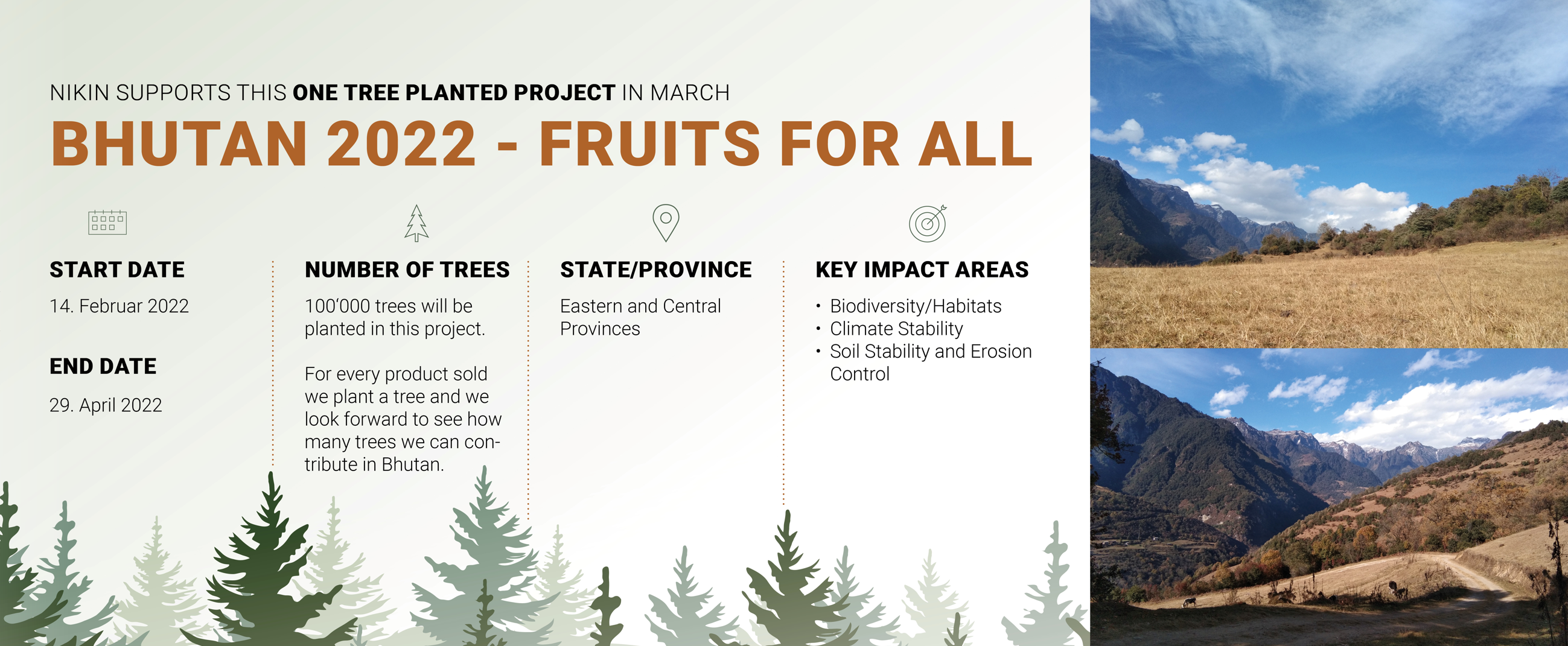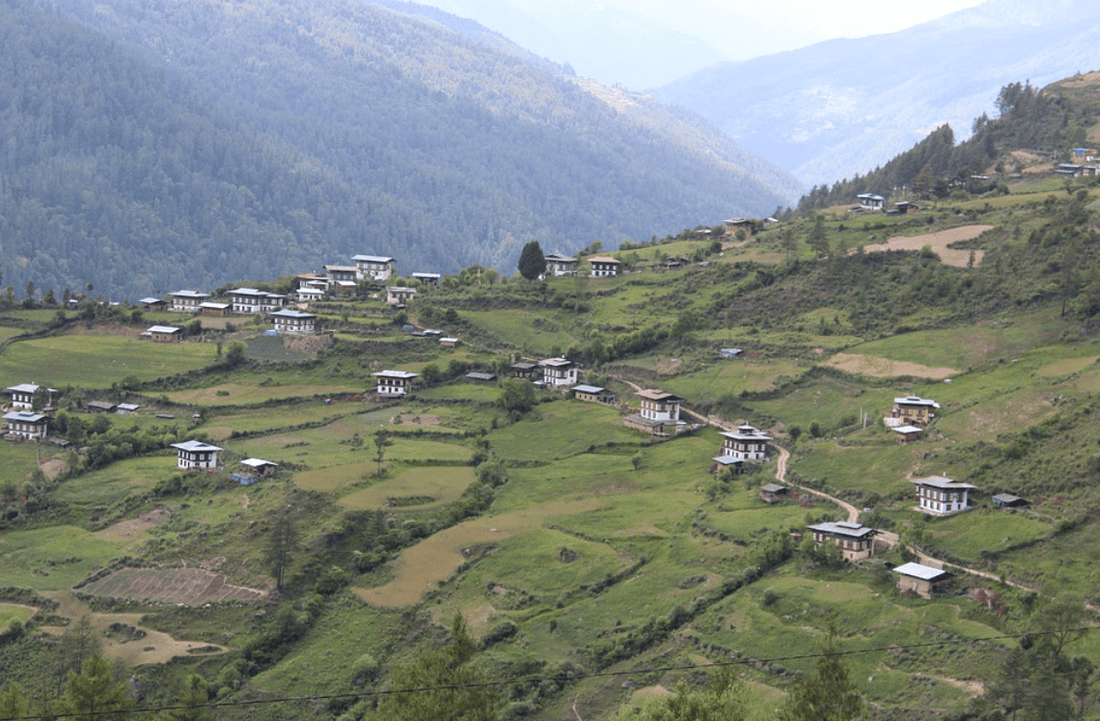In March 2022, we will plant indigenous trees in Bhutan in cooperation with our long-term partner One Tree Planted as part of the "Fruits for All" project. This project aims to strengthen local biodiversity, but also to fight poverty and hunger among the population.

Bhutan is an Asian country on the eastern edge of the Himalayas and is known for its spectacular landscapes, ranging from subtropical plains to steep mountains and valleys. Unfortunately, hunger and poverty prevail in many parts of Bhutan, especially in the eastern and central regions, due in part to deforested and underutilised fallow land. Planting fruit trees supports the food supply of many of the approximately 770,000 local people in Bhutan.

The "Fruits for All" project - for people and the environment
The Fruits for All project, planting fruit trees of various kinds, aims to help people and, at the same time, the environment. The project will increase the productivity of these landscapes in the long term and help take pressure off the remaining forests, while providing a range of tangible benefits - from food security to clean water and carbon sequestration. The fruit trees are each planted at a spacing of 7.5 m x 7.5 m - a total of 178 trees per hectare. The failed seedlings will be replaced in the next planting season.

A long-term and wide-ranging project
The Fruits for All project has just started and has so far been implemented in 4 regions in Bhutan. One Tree Planted has planted over 1'000 fruit trees in the provinces of Thimphu, Paro, Wangdue Phodrang and Tsirang so far. In total, around 100,000 food-producing fruit trees are to be planted in Bhutan.

Ecological impact and help for the population
This project promotes the creation of new open and functional green spaces in the country. Unused fallow land is utilised and the productivity of these landscapes is increased. As an important side effect, the trees provide new habitat for numerous bird and insect species, creating a biologically diverse landscape. However, the Fruits for All project also brings many benefits to the local community. The fruit trees will provide the local population with numerous fruits (walnut, hazelnut, chestnut, cherries, plums, apples, peaches, pears, avocados, mangoes) and thus contribute to the food supply. The project is making the whole area greener, which will increase the quality of life of the population and also a sustainable approach to the environment.

Information on this and many other tree planting projects can be found in our TreeTracker.




















